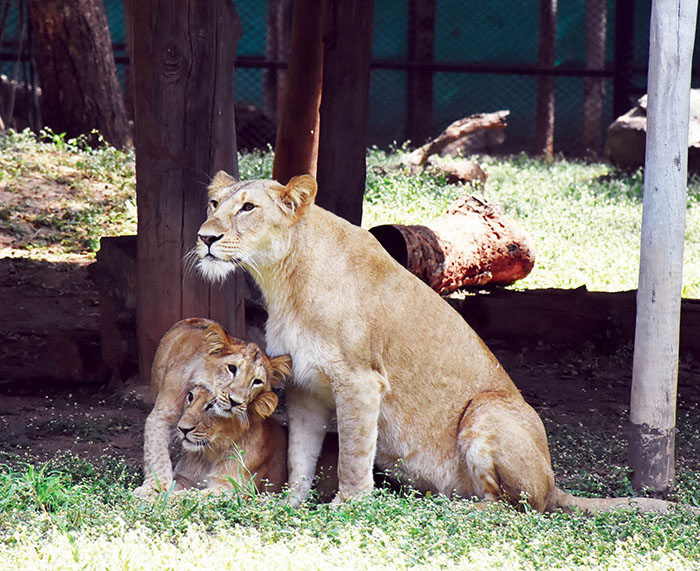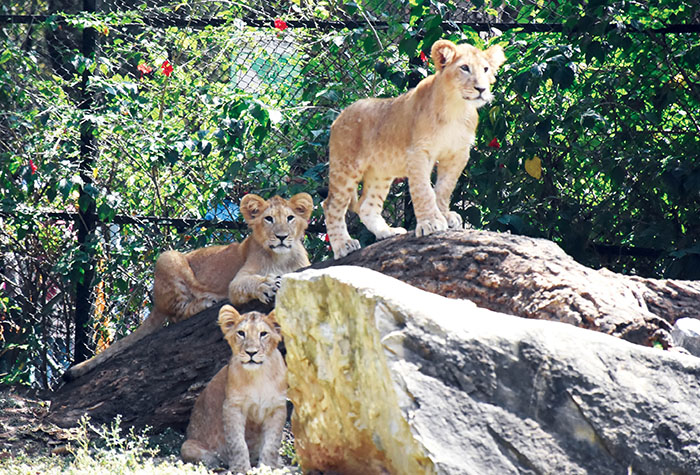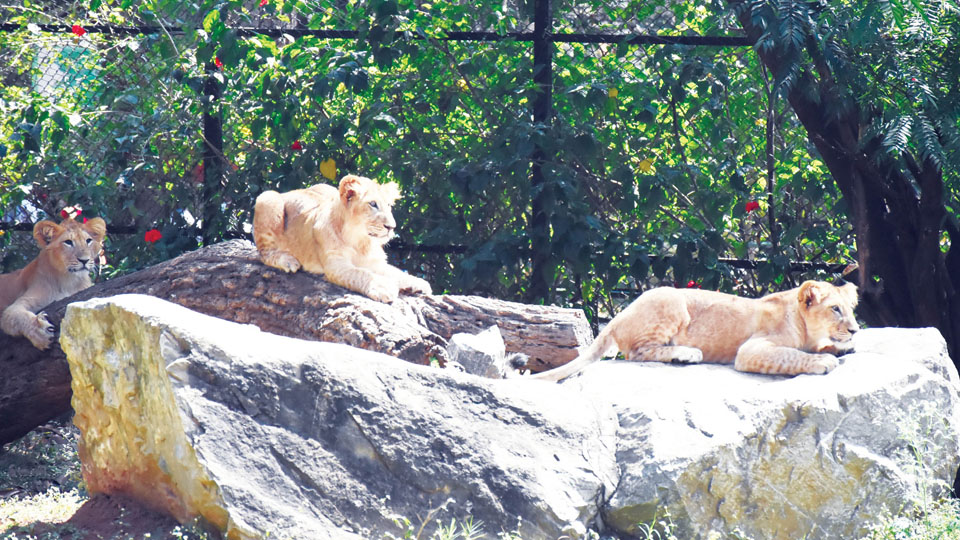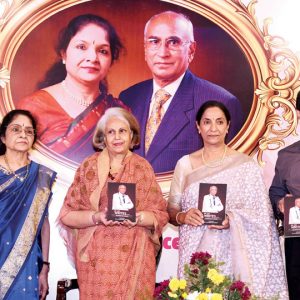Mysore/Mysuru: The three lion cubs that were born to Nirbhaya and Raju were displayed for the public for the first time on Jan. 26 at the Chamarajendra Zoological Gardens, popular as Mysuru Zoo.
Mysuru District Minister S.T. Somashekar released the cubs for public display in the presence of Mayor Shivakumar, Zoo Authority of Karnataka (ZAK) Chairman M. Shivakumar, Karnataka Exhibition Authority (KEA) Chairman Mirle Srinivas Gowda, former MUDA Chairman H.V. Rajeev, Zoo Executive Director Ajit M. Kulkarni and others.
Nirbhaya gave birth to the cubs on Aug. 5, 2022 after a gestation period of 103 days and the cubs were displayed along with their mother at the Zoo. With the display, the Zoo, known for its collection, cleanliness and conservation breeding of endangered species, has added another feather to its cap.
The birth of lion cubs in August came after more than eight years, thanks to the captive breeding efforts initiated by the Zoo authorities. They were paired in April 2022 after assessing their compatibility.

Five-year-old Nirbhaya was brought from Nandan Van Zoo and Safari at Raipur in Chhattisgarh under the animal exchange programme in 2021. She was paired with six-year-old Raju that was brought in 2019 from the Sakkarbaug Zoological Garden.
Sakkarbaug Zoological Garden, also known as Sakkarbaug Zoo or Junagadh Zoo, is a 200-hectare (490-acre) zoo that opened in 1863 at Junagadh, Gujarat. The Zoo provides pure-bred Asiatic lions for the Indian and the international endangered species captive breeding programme for the critically endangered species. Wild free ranging Asiatic lions have become extinct over most of Asia and are today found only in the nearby Gir Forest.

Nirbhaya is a first-time mother and she is taking care of the cubs well. Even the cubs are healthy. The Zoo presently has five adult lions, including two males and three females, and three cubs. Of the five adult lions, two are Asiatic lions and three are Afro-Asian lions.
According to Ajit Kulkarni, the cubs are healthy, energetic and active and their behaviour, movements and feeding patterns are closely monitored. “We have CCTV cameras in their enclosures and their keepers and doctors are closely observing them,” he said.
The Executive Director said that their vision is to become a successful centre for captive breeding. Over 85 percent of the animals housed and displayed at the Zoo have bred successfully. Currently, the Zoo has 150 different species and overall it has 1,450 animals, birds and reptiles.








Recent Comments